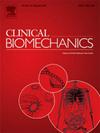External fixators in austere environments under surge capacity conditions: A systematic review
IF 1.4
3区 医学
Q4 ENGINEERING, BIOMEDICAL
引用次数: 0
Abstract
Background
High-energy trauma causing open fractures can take place in low-resource settings (“austere” environment) and mainly affects the lower limbs. In these environments, external fixators often provide definitive surgical treatment. This systematic review identifies those external fixators for use on lower limbs as a definitive treatment that are most clinically effective in the austere environment.
Methods
Multiple databases were searched to identify studies investigating outcomes of external fixators used in austere environments. Case reports were excluded. Hand searching and expert input identified additional references.
Findings
33 publications met the inclusion criteria. These were used worldwide. Commercially available fixators were used in 18 publications, and non-commercial ones including Balkan-designed devices in 6. The remaining non-commercial devices had 1 or 2 publications each. Union rates, where reported, varied from 47 to 100 % with no discernible difference between devices or location of use. Clinical complications varied from infection (0–79 %) through to nonunion and delayed union (0–22 %), loosening (0–36 %), osteomyelitis (0–19 %), construct stability (27–100 %), and amputation (0–50 %).
Interpretation
The variability in union and complication rates highlights the variability in severity of injuries, type of austere environment, and variability in fixator device efficacy. The non-commercial or “one-off” devices show promise, with comparable or better outcomes to the commercial devices, whereas others did not work well, with poor outcomes. The need for surge capacity availability in these austere environments would enable locally manufactured devices to be quickly made which are fit for purpose, yet regulation and quality control of these remains a challenge in their rollout.
外固定器在能力激增条件下的艰苦环境中的应用:系统回顾
背景高能创伤导致开放性骨折可发生在低资源环境(“严峻”环境),主要影响下肢。在这些环境下,外固定架通常提供明确的手术治疗。本系统综述确定了用于下肢的外固定架作为在严峻环境下最有效的临床治疗方法。方法检索多个数据库,以确定在恶劣环境下使用外固定架的研究结果。病例报告被排除在外。手工搜索和专家输入确定了额外的参考文献。33篇出版物符合纳入标准。这些在世界范围内使用。18份出版物使用了市售固定器,6份出版物使用了包括巴尔干设计装置在内的非商业固定器。其余的非商业设备各有1或2份出版物。据报道,愈合率从47%到100%不等,设备或使用地点之间没有明显差异。临床并发症从感染(0 - 79%)到不愈合和延迟愈合(0 - 22%)、松动(0 - 36%)、骨髓炎(0 - 19%)、结构稳定性(27 - 100%)和截肢(0 - 50%)不等。解释:愈合率和并发症发生率的可变性突出了损伤严重程度、严峻环境类型和固定装置疗效的可变性。非商业或“一次性”设备显示出希望,具有与商业设备相当或更好的结果,而其他设备效果不佳,结果较差。在这些严峻的环境中,对浪涌容量可用性的需求将使本地制造的设备能够快速制造出适合用途的设备,但这些设备的监管和质量控制仍然是其推出的挑战。
本文章由计算机程序翻译,如有差异,请以英文原文为准。
求助全文
约1分钟内获得全文
求助全文
来源期刊

Clinical Biomechanics
医学-工程:生物医学
CiteScore
3.30
自引率
5.60%
发文量
189
审稿时长
12.3 weeks
期刊介绍:
Clinical Biomechanics is an international multidisciplinary journal of biomechanics with a focus on medical and clinical applications of new knowledge in the field.
The science of biomechanics helps explain the causes of cell, tissue, organ and body system disorders, and supports clinicians in the diagnosis, prognosis and evaluation of treatment methods and technologies. Clinical Biomechanics aims to strengthen the links between laboratory and clinic by publishing cutting-edge biomechanics research which helps to explain the causes of injury and disease, and which provides evidence contributing to improved clinical management.
A rigorous peer review system is employed and every attempt is made to process and publish top-quality papers promptly.
Clinical Biomechanics explores all facets of body system, organ, tissue and cell biomechanics, with an emphasis on medical and clinical applications of the basic science aspects. The role of basic science is therefore recognized in a medical or clinical context. The readership of the journal closely reflects its multi-disciplinary contents, being a balance of scientists, engineers and clinicians.
The contents are in the form of research papers, brief reports, review papers and correspondence, whilst special interest issues and supplements are published from time to time.
Disciplines covered include biomechanics and mechanobiology at all scales, bioengineering and use of tissue engineering and biomaterials for clinical applications, biophysics, as well as biomechanical aspects of medical robotics, ergonomics, physical and occupational therapeutics and rehabilitation.
 求助内容:
求助内容: 应助结果提醒方式:
应助结果提醒方式:


